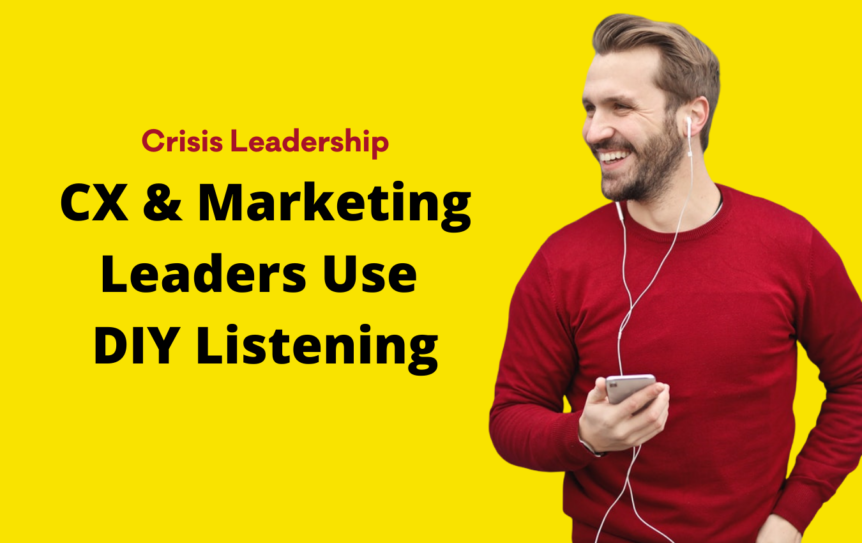Rather than hibernating during the COVID-19 lock-down, I’ve been running my own ‘listen and learn’ program with CX and Marketing Leaders (CCO’s, CXO’s and CMO’s) to understand their challenges and new-world opportunities. An interesting insight from my first-hand conversations is leaders are undertaking DIY customer listening.
Listening is a key skill in understanding your customers’ perspective; what they’re thinking, doing and experiencing. During the crisis, CX and Marketing leaders have been hitting the phones and taking to Zoom to have customer conversations in an effort to get a deeper understanding of their customers’ new world.
Get interested in your customers’ lives
Customer listening tells an organisation what they’re doing well, where improvements can be made, and where opportunities exist. Active or empathetic listening begins with being interested in your customers’ lives; what’s important to them, their struggles, and the problems they’re trying to solve.
Deep customer understanding comes from a multi-layered listening approach that incorporates first-hand customer conversations with solicited customer feedback (VoC). Think of a multi-layered customer listening approach as a three-tiered cake.
Customer listening is like a three-tiered cake
The top layer of the cake represents customer satisfaction scores. The second layer is customer verbatim feedback and the bottom layer is the foundation. The foundation must be ‘empathetic listening’ or ‘active listening’, i.e. first-hand customer conversations.
Unlike CX scores, first-hand conversations enable customers to share their point of view and express their feelings; their experience highs, lows and gaps, which helps to identify customer needs, goals root causes of customer problems and changing expectations.
In our conversation a Chief Customer Officer said …
“Our contact centre is operating remotely now; they’re now all working from home, so I can’t drop by. It’s almost impossible to virtually drop by to get a customer pulse, because they are all on calls; were now taking 1000 customer calls per day.”
“So I set myself up as a contact agent and make some calls to customers. I was incredibly nervous … but I wanted to feel what it was like to speak directly with customers, I wanted to hear their voice, what they were saying in their own words.”
These customer conversations have prompted the question with the leadership team, ‘How will our customer experience strategy be shaped for the customers’ new world?’
What are our customers telling us?
When the IBM board appointed Lou Gerstner to turn around the ailing company in the 1990’s, he named his listening initiative ‘Operation Bear Hug’. Gerstner realised that the business’s experience alone was not enough to turn IBM around—and he saw listening as an important step in the strategy-creating process.
Over three months he met with employees and customers to ask about the challenges they were dealing with, and how IBM could help. He called customers every day.
He listened, put his assumptions to one side and tried not to draw immediate conclusions. Operation Bear Hug led to quicker customer resolutions, new market opportunities and the transformation of an inwardly focused culture—all through asking the single most important question when people were making decisions and problem solving, ‘What are our customers telling us?’
Your customers’ new-world
There’s a key learning from my ‘listen and learn’ program. To pivot their customer experience strategy, CX and Marketing Leaders need to understand their customers’ new world. Listening is the path to deeper understanding, the discovery of new insights, and presents new opportunities for faster recovery and growth.

